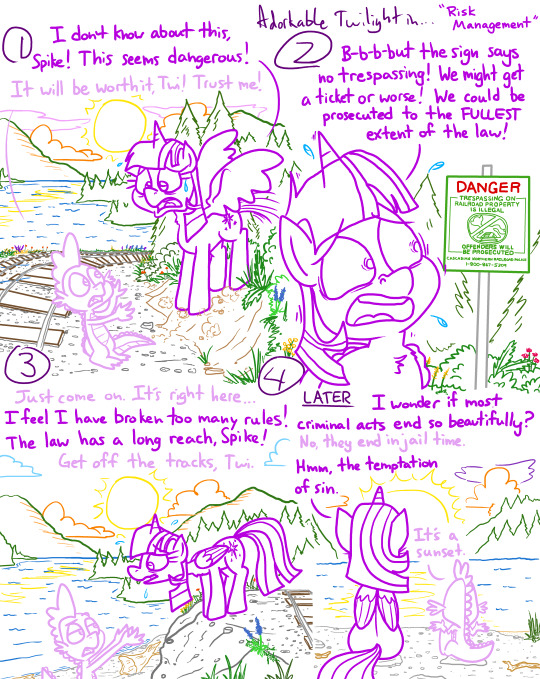#Landscape management
Explore tagged Tumblr posts
Photo

Raleigh Landscape This is an illustration of a sizable transitional front yard stone landscaping in the springtime.
0 notes
Photo

Pathway Raleigh Design ideas for a large traditional partial sun backyard concrete paver garden path.
#landscape#greensboro#landscapes#landscape management#horticultural work#landscape design#paver sidewalk
0 notes
Photo

Landscape Fire Pit in Raleigh Inspiration for a large traditional backyard concrete paver landscaping with a fire pit.
#crape myrtle tree#outdoor living areas and hardscapes#landscape management#winter maintenance#landscape installation
0 notes
Photo

Driveway Driveway Raleigh An example of a huge southwestern front yard concrete paver driveway.
#landscape management#tile stoop#stucco house#landscape installation#outdoor living areas and hardscapes#boulder#concrete pavers
0 notes
Photo

Raleigh Driveway Driveway Design ideas for a large farmhouse driveway.
0 notes
Text
Landscape in Raleigh

Inspiration for a sizable, conventional backyard with concrete pavers and a fire pit.
#bulk goods#outdoor living areas and hardscapes#landscape management#landscape lighting#concrete paver driveway#landscapes
0 notes
Text
Landscape - Pathway

Design ideas for a large traditional partial sun backyard concrete paver garden path.
#landscape design#pathway#brick column#landscape#paver sidewalk#landscape management#horticultural work
0 notes
Photo

Landscape Raleigh A traditional side yard concrete paver driveway is shown in the picture.
#outdoor living areas and hardscapes#landscape#stone pavers#landscape design#landscape management#long driveway
0 notes
Photo

Raleigh Infinity Pool Picture of a large, elegant backyard with a uniquely shaped infinity hot tub
0 notes
Text
Grant & Power Landscaping Services
Grant & Power Landscaping will be fun, exciting and rewarding. We pride ourselves on being attentive from the start of the planning process through completion and beyond. Our superior landscape construction and professional management programs assure you will enjoy your investment for many years to come.

#Landscape Management#Landscaping Services Greater Chicago#Landscaping Company Greater Chicago#Landscaping Company#Residential Landscaping#Residential Landscaping Company#Commercial Landscaping Company#Commercial Landscaping#Landscape Design
1 note
·
View note
Photo

Raleigh Traditional Landscape Ideas for concrete paver landscaping in a large traditional front yard with partial sun.
#outdoor living areas and hardscapes#landscape installation#landscape management#landscape lighting#natural stone edging#paver sidewalk
0 notes
Text
Landscape Management Company
Heartland Landscape Management Company, A progressive organization dedicated to building relationships and delivering exceptional service through leading commercial landscape firms across the United States.
#landscape management company#landscape management#landscape management services#landscape management company near me
0 notes
Photo

Raleigh Infinity Pool
#Picture of a large#elegant backyard with a uniquely shaped infinity hot tub pool#landscape design#landscapes#hot tub#landscape management
0 notes
Text
Tallying every single tree in the kingdom. Endangered South Asian sandalwood. British war to control the forests. European companies claim the ecosystem. Failure of the plantation. Until the twentieth century, the Empire couldn't figure out how to cultivate sandalwood because they didn't understand that the plant is actually a partial root parasite, so their monoculture approach of eliminating companion species was self-defeating. French perfumes and the creation of "Sandalwood City".
---
Selling at about $147,000 per metric ton, the aromatic heartwood of Indian sandalwood (S. album) is arguably [among] the most expensive wood in the world. Globally, 90 per cent of the world’s S. album comes from India [...]. And within India, around 70 per cent of S. album comes from the state of Karnataka [...] [and] the erstwhile Kingdom of Mysore. [...] [T]he species came to the brink of extinction. [...] [O]verexploitation led to the sandal tree's critical endangerment in 1974. [...]
---
Francis Buchanan’s 1807 A Journey from Madras through the Countries of Mysore, Canara and Malabar is one of the few European sources to offer insight into pre-colonial forest utilisation in the region. [...] Buchanan records [...] [the] tradition of only harvesting sandalwood once every dozen years may have been an effective local pre-colonial conservation measure. [...] Starting in 1786, Tipu Sultan [ruler of Mysore] stopped trading pepper, sandalwood and cardamom with the British. As a result, trade prospects for the company [East India Company] were looking so bleak that by November 1788, Lord Cornwallis suggested abandoning Tellicherry on the Malabar Coast and reducing Bombay’s status from a presidency to a factory. [...] One way to understand these wars is [...] [that] [t]hey were about economic conquest as much as any other kind of expansion, and sandalwood was one of Mysore’s most prized commodities. In 1799, at the Battle of Srirangapatna, Tipu Sultan was defeated. The kingdom of Mysore became a princely state within British India [...]. [T]he East India Company also immediately started paying the [new rulers] for the right to trade sandalwood.
British control over South Asia’s natural resources was reaching its peak and a sophisticated new imperial forest administration was being developed that sought to solidify state control of the sandalwood trade. In 1864, the extraction and disposal of sandalwood came under the jurisdiction of the Forest Department. [...] Colonial anxiety to maximise profits from sandalwood meant that a government agency was established specifically to oversee the sandalwood trade [...] and so began the government sandalwood depot or koti system. [...]
From the 1860s the [British] government briefly experimented with a survey tallying every sandal tree standing in Mysore [...].
Instead, an intricate system of classification was developed in an effort to maximise profits. By 1898, an 18-tiered sandalwood classification system was instituted, up from a 10-tier system a decade earlier; it seems this led to much confusion and was eventually reduced back to 12 tiers [...].
---
Meanwhile, private European companies also made significant inroads into Mysore territory at this time. By convincing the government to classify forests as ‘wastelands’, and arguing that Europeans would improves these tracts from their ‘semi-savage state’, starting in the 1860s vast areas were taken from local inhabitants and converted into private plantations for the ‘production of cardamom, pepper, coffee and sandalwood’.
---
Yet attempts to cultivate sandalwood on both forest department and privately owned plantations proved to be a dismal failure. There were [...] major problems facing sandalwood supply in the period before the twentieth century besides overexploitation and European monopoly. [...] Before the first quarter of the twentieth century European foresters simply could not figure out how to grow sandalwood trees effectively.
The main reason for this is that sandal is what is now known as a semi-parasite or root parasite; besides a main taproot that absorbs nutrients from the earth, the sandal tree grows parasitical roots (or haustoria) that derive sustenance from neighbouring brush and trees. [...] Dietrich Brandis, the man often regaled as the father of Indian forestry, reported being unaware of the [sole significant English-language scientific paper on sandalwood root parasitism] when he worked at Kew Gardens in London on South Asian ‘forest flora’ in 1872–73. Thus it was not until 1902 that the issue started to receive attention in the scientific community, when C.A. Barber, a government botanist in Madras [...] himself pointed out, 'no one seems to be at all sure whether the sandalwood is or is not a true parasite'.
Well into the early decades of twentieth century, silviculture of sandal proved a complete failure. The problem was the typical monoculture approach of tree farming in which all other species were removed and so the tree could not survive. [...]
The long wait time until maturity of the tree must also be considered. Only sandal heartwood and roots develop fragrance, and trees only begin developing fragrance in significant quantities after about thirty years. Not only did traders, who were typically just sailing through, not have the botanical know-how to replant the tree, but they almost certainly would not be there to see a return on their investments if they did. [...]
---
The main problem facing the sustainable harvest and continued survival of sandalwood in India [...] came from the advent of the sandalwood oil industry at the beginning of the twentieth century. During World War I, vast amounts of sandal were stockpiled in Mysore because perfumeries in France had stopped production and it had become illegal to export to German perfumeries. In 1915, a Government Sandalwood Oil Factory was built in Mysore. In 1917, it began distilling. [...] [S]andalwood production now ramped up immensely. It was at this time that Mysore came to be known as ‘the Sandalwood City’.
---
Text above by: Ezra Rashkow. "Perfumed the axe that laid it low: The endangerment of sandalwood in southern India." The Indian Economic and Social History Review, Volume 51 (2014), Issue 1, pages 41-70. First published online 10 March 2014. DOI: 10.1177/0019464613515533 [Bold emphasis and some paragraph breaks/contractions added by me. Italicized first paragraph/heading in this post added by me. Presented here for commentary, teaching, criticism purposes.]
#a lot more in full article specifically about#postindependence indian nationstates industrial extraction continues trend established by british imperial forestry management#and ALSO good stuff looking at infamous local extinctions of other endemic species of sandalwood in south pacific#that compares and contrasts why sandalwood survived in india while going extinct in south pacific almost immediately after european conques#abolition#ecology#imperial#colonial#landscape#indigenous#multispecies#tiger#tidalectics#archipelagic thinking#intimacies of four continents#carceral geography#geographic imaginaries#haunted
247 notes
·
View notes
Text

Adorkable Twilight & Friends - “Risk Management"
Adorkable Patreon Pals
Adorkable Twilight & Friends Twitter
Adorkable Twilight & Friends Wiki
Adorkable Twilight & Friends Deviant Art
#risk management#adorkable twilight & friends#adorkable#comic#adorkable twilight#twilight sparkle#humor#cute#friendship#family#silly#worried#nervous#crime#spike#train tracks#riverfront#river#sunset#landscape#scenery#sin#temptation#sign#deeper meaning
106 notes
·
View notes
Text

hmmm environment and texture study thing of the one of my fav parts of RD.. Micaiah and Soren’s dialogues are so everything
#fire emblem#radiant dawn#fe10#tellius#micaiah#soren#blood#I LOVE THEM they are so thematic foils. and eventually buddies#I don’t know how to draw.. landscapes … I am trying#I love teeny embroidering details I need to do it more#the atmosphere of this map is verrrry cool#LOL realistically if soren is this close of course he’s about to be deleted by BK#but I managed it last time without the meteor tome. I love the elaborate rescue operations that are sometimes necessary#anyway I love them if you didn’t know
816 notes
·
View notes